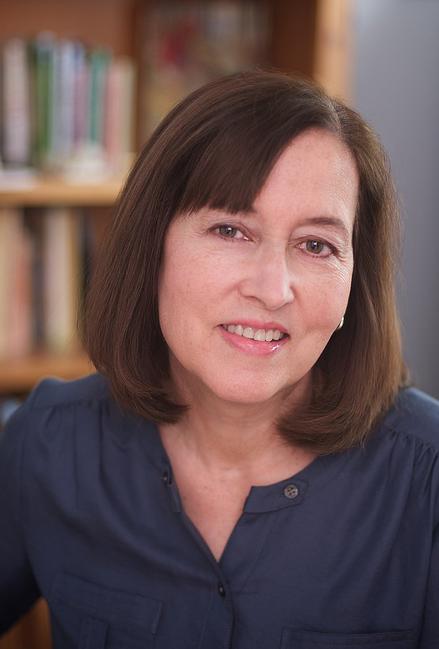
Jan Pinborough is the author of “Miss Moore Thought Otherwise.” The following is a complete transcript of her interview with Cracking the Cover.
Have you always been an writer?
I wrote my first story in second grade and my first poems in fourth grade. After college, I became a magazine editor and writer. This is my second book, my first for children.
Why do you write for young readers?
Because children are so important. I love the genre of the children’s book biography. It lets children touch history and gives them heroes who inspire them.
“Miss Moore Thought Otherwise” is your first book for children. Where did your idea for it come from?
It all started in 2004 when a dear friend of mine, Shauna Cook Clinger, was commissioned to paint a portrait of Moore for a children’s library at Utah State University in Logan, Utah. “You need to write a children’s book about Anne Carroll Moore,” she told me. I’m not a library historian, and I’m not from New York City, so I’d never heard of Moore. At the time I wasn’t even writing for children. But after reading Frances Sayers’s biography about Moore, I became convinced that children needed to know about this strong-minded woman who did so much to give the gift of books and libraries to children not only in the United States, but throughout the world.
What are the challenges of writing a picture book?
I’m not a library historian, but I feel that whenever we are writing history we’re treading on sacred ground. I also knew that in some ways Moore is a slightly controversial figure. I didn’t want to overstate her contribution to children’s library services because surely many others played important roles across the country. I just wanted to tell the story truly and accurately — and in a way that children would find interesting and engaging. That’s a delicate balance.
What are the highlights?
The hours I spent in the New York Public Library poring over the Anne Carroll Moore Collection were the stuff of my dreams. I held a postcard from her friend Beatrix Potter, with a little hand-drawn Nicholas doll drawn by Potter herself; a poem written about her and typed out by Carl Sandburg, and a telegram from Eleanor Roosevelt.
How long did you work on “Miss Moore Thought Otherwise”?
For about three years. Writing this book was by far the most challenging writing project I’ve ever undertaken.
What makes “Miss Moore Thought Otherwise” unique?
I had two goals in writing Miss Moore Thought Otherwise. The first was to let children know how they came to receive that indispensable yet much-taken-for-granted gift, the children’s library. Poet Walter de la Mare offered the best assessment of Moore’s towering contribution: “The children of this world will never be able to repay the debt they owe to [Anne Carroll Moore].” I thought that children deserved to know something about those whose vision and determination gave them the privileges of libraries and books. Along the way, I hoped to encourage “otherwise-thinking” children to value and pursue their own individualistic ideas––and thus to make their own unique contributions to the world.
Did the book turn out the way you thought it would?
Better–thanks to the inspired work of Debby Atwell, who infused the illustrations with so much light, color, and charm–and to the unerring editorial expertise of my editor, Ann Rider.
Why do you think “Miss Moore Thought Otherwise” will appeal to young readers?
Children are shocked and fascinated to learn that at one time children were not allowed to enter libraries–much less to check out books. I think they will love Anne Carroll Moore as much as I’ve grown to love her. And I think they will appreciate the message that being not just like everyone else can be a powerful gift.
What are you working on now?
Another picture book biography
Is there a book from your childhood that still resonates with you today?
I recently bought a copy of the first book I remember falling in love with, that incomparable story of happy romance, The Rabbit’s Wedding by Garth Williams. There was a near craze over it in my first-grade class. I remember being disappointed because it was so often checked out, and I finally gave up looking for it. Perhaps it had been pulled off the shelf by adults who found it controversial rather than by eager children. As much as for any of her work, I pay tribute to Anne Carroll Moore for her passionate and devoted championing of books for children. Moore spoke with a determined and effective voice, and the book publishers of the world, as well as the librarians of the world, took note.
